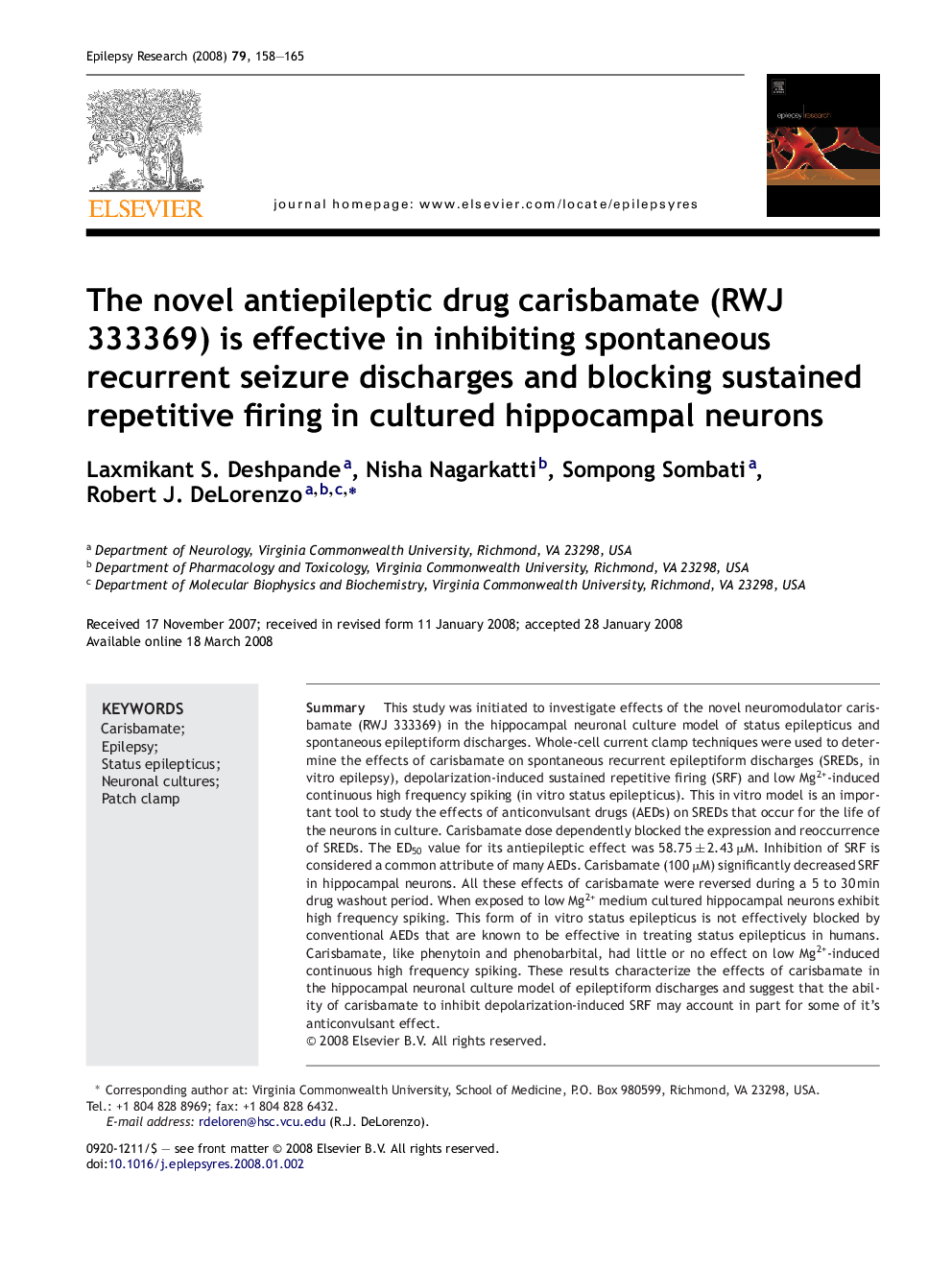| Article ID | Journal | Published Year | Pages | File Type |
|---|---|---|---|---|
| 3052975 | Epilepsy Research | 2008 | 8 Pages |
Abstract
This study was initiated to investigate effects of the novel neuromodulator carisbamate (RWJ 333369) in the hippocampal neuronal culture model of status epilepticus and spontaneous epileptiform discharges. Whole-cell current clamp techniques were used to determine the effects of carisbamate on spontaneous recurrent epileptiform discharges (SREDs, in vitro epilepsy), depolarization-induced sustained repetitive firing (SRF) and low Mg2+-induced continuous high frequency spiking (in vitro status epilepticus). This in vitro model is an important tool to study the effects of anticonvulsant drugs (AEDs) on SREDs that occur for the life of the neurons in culture. Carisbamate dose dependently blocked the expression and reoccurrence of SREDs. The ED50 value for its antiepileptic effect was 58.75 ± 2.43 μM. Inhibition of SRF is considered a common attribute of many AEDs. Carisbamate (100 μM) significantly decreased SRF in hippocampal neurons. All these effects of carisbamate were reversed during a 5 to 30 min drug washout period. When exposed to low Mg2+ medium cultured hippocampal neurons exhibit high frequency spiking. This form of in vitro status epilepticus is not effectively blocked by conventional AEDs that are known to be effective in treating status epilepticus in humans. Carisbamate, like phenytoin and phenobarbital, had little or no effect on low Mg2+-induced continuous high frequency spiking. These results characterize the effects of carisbamate in the hippocampal neuronal culture model of epileptiform discharges and suggest that the ability of carisbamate to inhibit depolarization-induced SRF may account in part for some of it's anticonvulsant effect.
Related Topics
Life Sciences
Neuroscience
Neurology
Authors
Laxmikant S. Deshpande, Nisha Nagarkatti, Sompong Sombati, Robert J. DeLorenzo,
